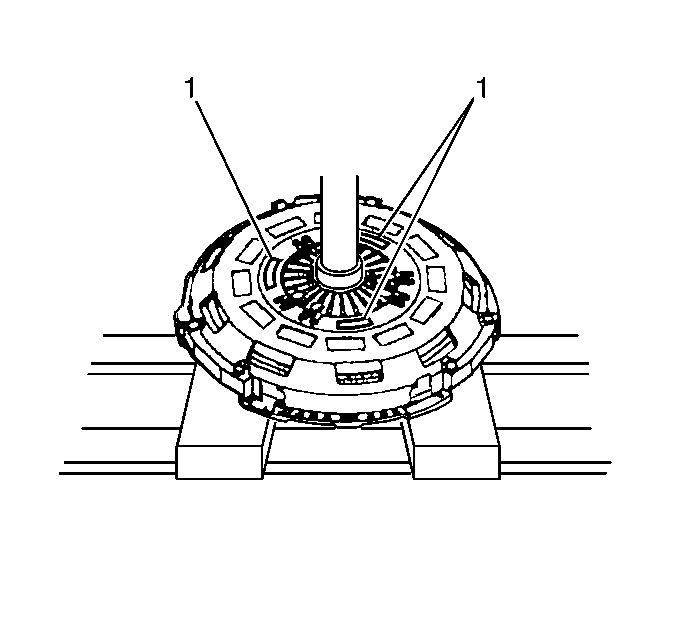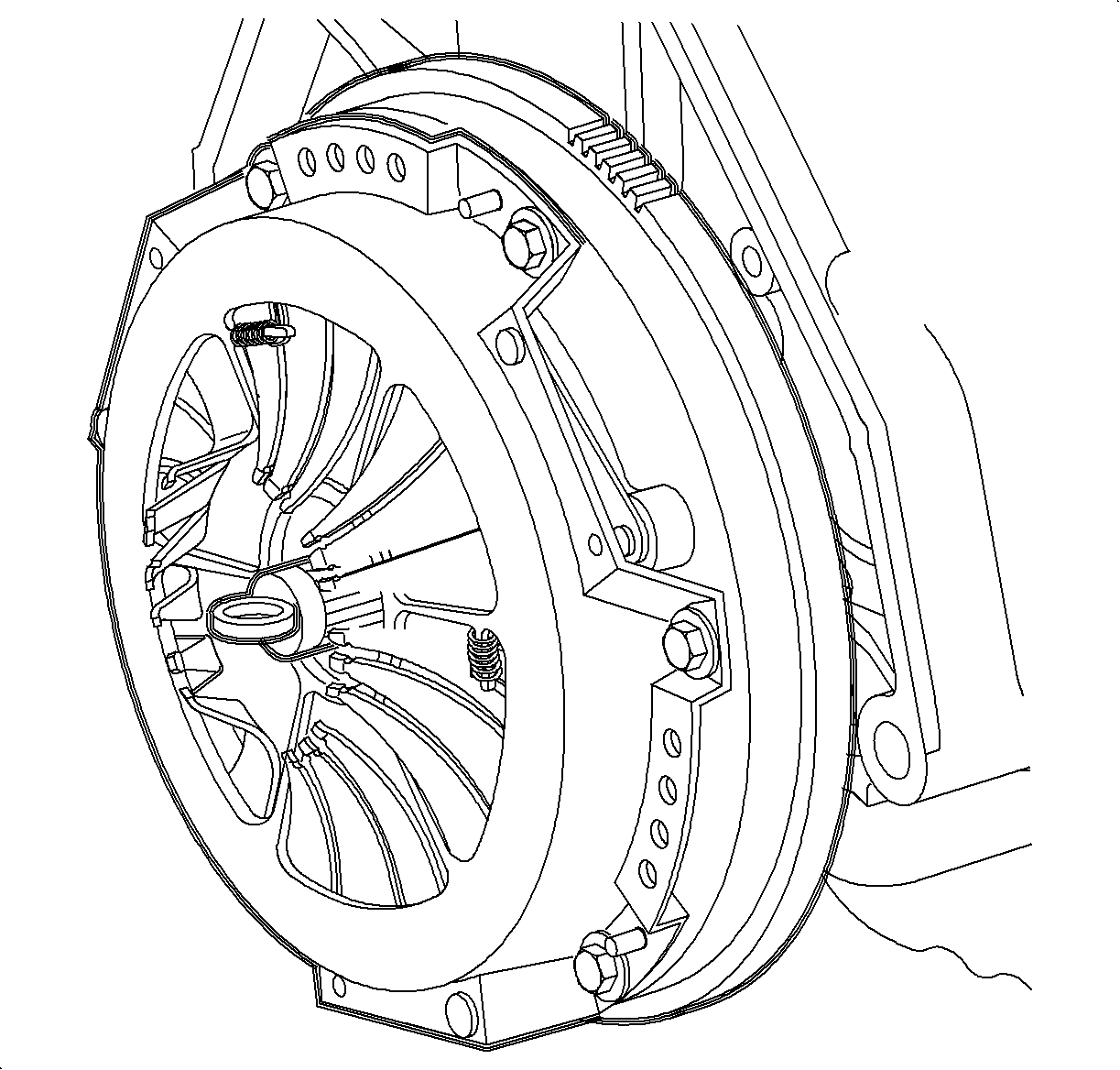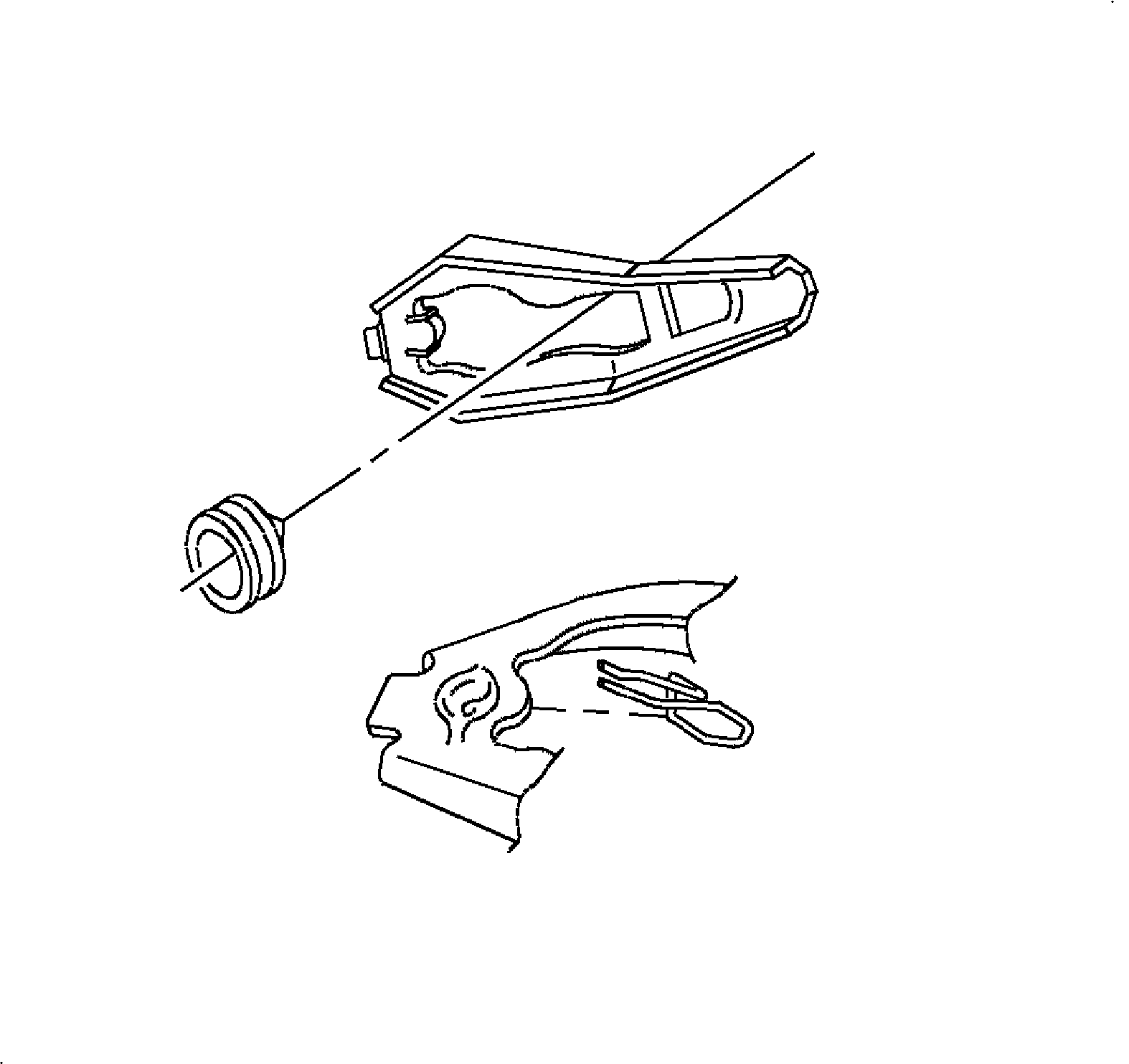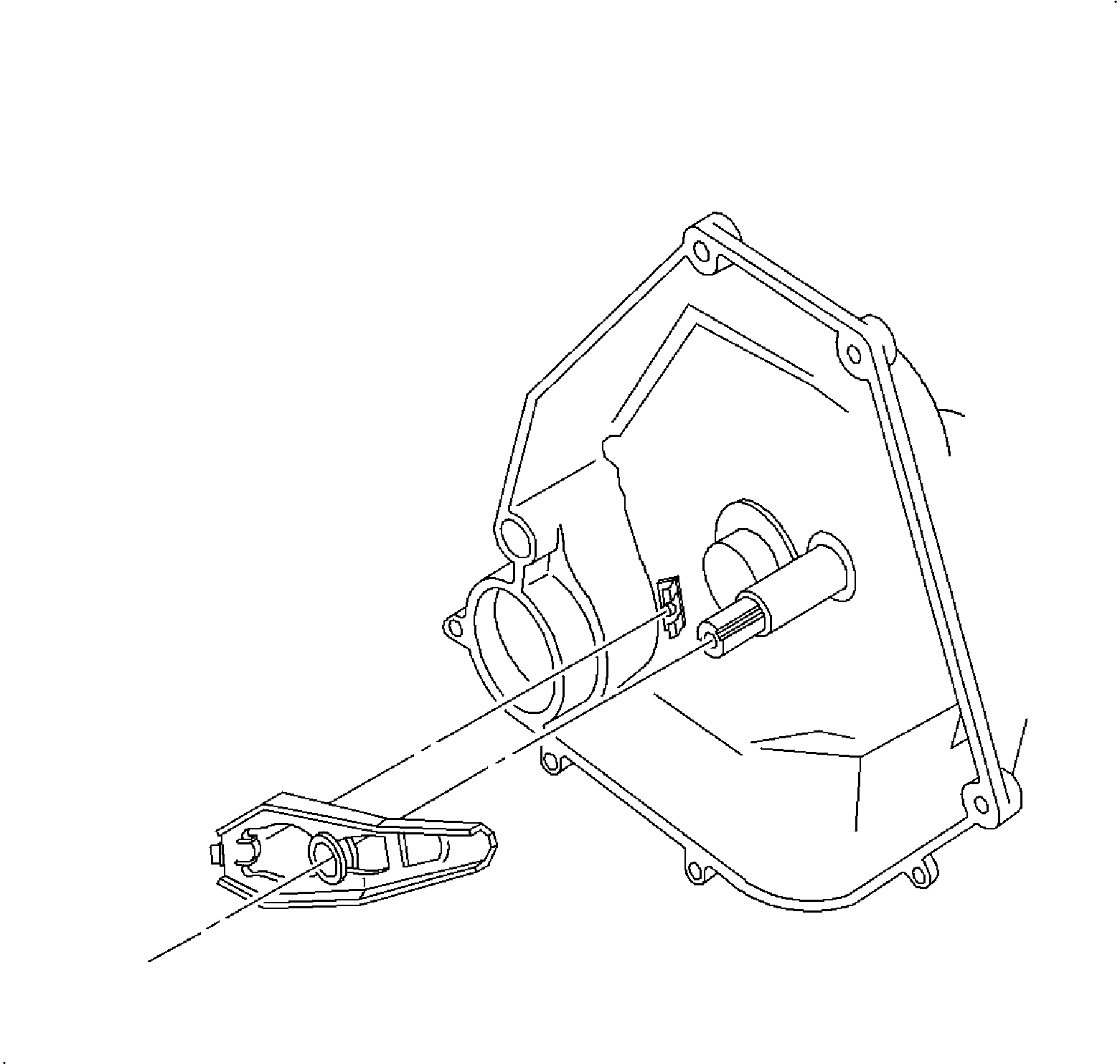For 1990-2009 cars only
- Place clutch cover on a flat surface with clutch plate fingers facing up. Using two screwdrivers, push counter-clockwise on two adjuster ring tabs to prevent the adjuster ring tabs from suddenly moving forward. At the same time, using a press, depress the clutch plate fingers until the adjuster ring tabs begin to move freely.
- Compress the springs by pushing the adjuster ring tabs counter-clockwise. The clutch is fully adjusted when the compressed spring length is between 15 mm-20 mm (0.59 in-0.79 in).
- While holding the adjuster ring tabs in this position, remove the pressure on the clutch plate fingers.
- Remove the clutch cover from the press and install onto the vehicle.
- Tighten the clutch housing cover assembly bolts using a progressive crisscross pattern to prevent warping of the cover stamping.
- Remove the clutch alignment tool from the clutch disc.
- Install the clutch fork stabilizer and the ball stud if removed.
- Install the fork retainer to the clutch fork.
- Install the release fork and the bearing to the transaxle by snapping the fork onto the ball stud.
- Lube the fork pivot point with the clutch spline lubricant P/N 21005995 or equivalent and install the release bearing to the release fork.
- Lightly lube the input shaft splines with clutch spline lubricant P/N 21005995 or equivalent.
- Install the transaxle.

Notice: Refer to Fastener Notice in the Preface section.

Important: When tightening the clutch housing cover assembly bolts, do not tighten any one bolt more than half a turn at a time or the clutch housing cover assembly may warp.
Tighten
Tighten the clutch housing cover-to-flywheel bolts to 25 N·m (18 lb ft)

Tighten
Tighten the clutch fork ball stud to 24 N·m (18 lb ft).

Important: Excessive amounts of lubricant on the input shaft splines can contaminate the clutch disc and cause clutch shudder.
